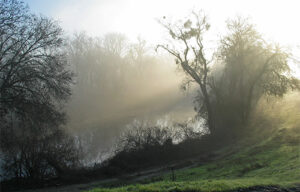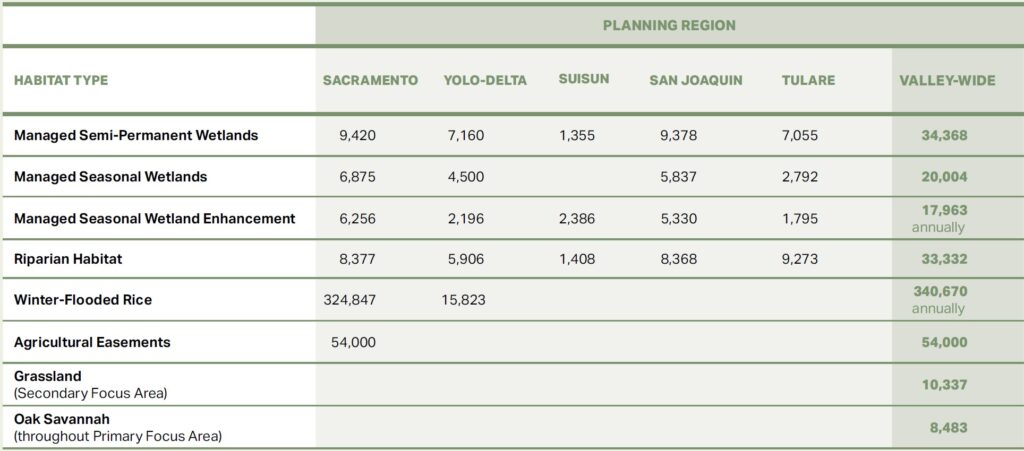Habitats
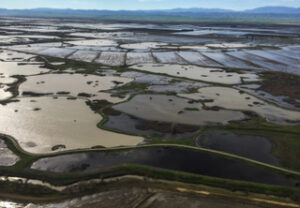
There are a variety of wetland types that contribute to the mosaic of habitat that waterfowl, shorebirds, and other wetland-dependent wildlife rely on each year. Each wetland type requires different water management, both in terms of the overall volume of water that must be applied and timing of delivery.
Riparian habitats are transitional areas between land and water ecosystems, ranging from swift rapids and waterfalls of steep canyons to slow moving water in floodplains. Riparian vegetation is structurally complex and may contain a canopy, subcanopy, and understory layers. Stream and riverside forests that are located adjacent to other valuable bird habitats, such as wetlands, are particularly important.
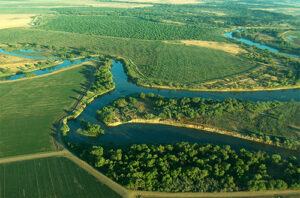
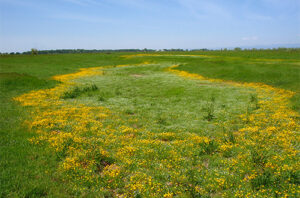
Grasslands are landscapes dominated by grasses and other herbaceous plant species with few trees. Oak savannahs are similar but have up to 40% tree canopy, dominated by oaks (Quercus spp.). These habitats are an important component of Central Valley uplands, forming a ring of open country, low-elevation foothills and rangelands surrounding the valley floor. Roughly 60 percent of the Central Valley’s historic grasslands have been lost due to conversion to intensive agriculture and urban development.
Wet meadows are a rare but important component of the Sierra Nevada and southern Cascades, and their conservation value far outweighs the 2% land cover they represent. Mountain meadows provide diverse ecological services when healthy, and they are also biodiversity hotspots that provide important habitat for numerous species, including the state endangered Willow Flycatcher
Mountain meadows are ecologically distinct and are treated separately from valley and foothill grasslands. Within the CVJV planning region there is an estimated 169,252 acres (Roberts et al. 2022. Foothills to Summit. Point Blue Conservation Science, Petaluma, CA).
